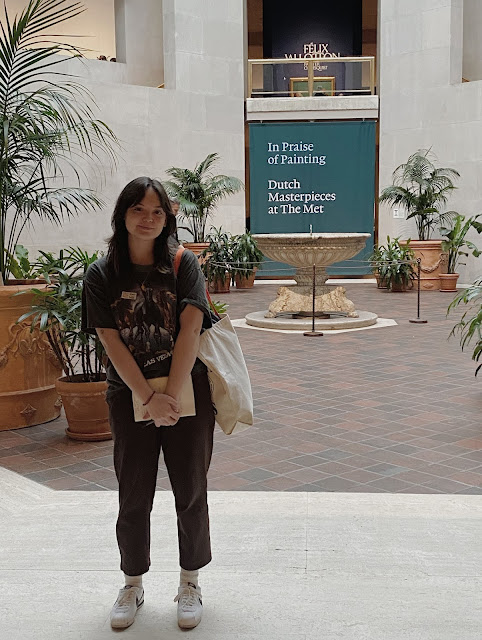Fall Semester 2018: Isaac Gorres
Yayoi Kusama: Atlanta, Georgia
Isaac Gorres
Isaac Gorres
The Cornell Scholarship Award allowed me to travel to a critically acclaimed exhibition of Yayoi Kusama's work at the High Museum of Art in Atlanta, Georgia. This is particularly applicable to my future career plans because I am planning on entering the field of art conservation. The exhibition featured numerous participatory works or works in unconventional media—Kusama invented the term “soft sculptures” to describe her conglomerations of stuffed fabric phalli that she affixed to furniture, shoes, boats, and canvases. Some of these works use electronic lighting systems, others contain participatory elements, while still others are crafted more traditionally with oil paints and canvas.
The Infinity Mirrors exhibition highlighted many works--most notably, Kusama's mirror rooms--that completely contain the viewer. Museums shuttle hundreds of guests per day through these artworks, locking the museum-goers inside for twenty to thirty seconds. At the Hirshhorn Museum and Sculpture Garden in DC, where the exhibition originated, a careless selfie-taker crushed a porcelain component of one of the mirror rooms because they stepped backwards off of the designated standing area. Some of Kusama’s artwork is even more hands-on: her Obliteration Room allows viewers to place colored dots wherever they want in a whitewashed living room. Kusama’s art is inherently participatory, and this presents interesting challenges to conservators.
It was extremely educational to see these works in person, not only to witness Kusama’s creations, but also to see the measures that the museum was taking to ensure the safety of the artworks. For example, in the mirror room where the museum-goer in DC had damaged the porcelain pumpkin—All the Eternal Love I Have for the Pumpkins—the museum had a representative that went inside of the room with me. In almost all of the other rooms, they shut me in the room with one or two other guests unsupervised.
This exhibit featured numerous examples of participatory artwork that pose difficult questions for art conservators due to their audience-involved nature or their unconventional composition, and it was extremely interactive to view the works in person. I would like to extend my gratitude to the donor of the Cornell Scholarship Award and the Rollins Department of Art and Art History for providing me with this amazing opportunity.


Comments
Post a Comment